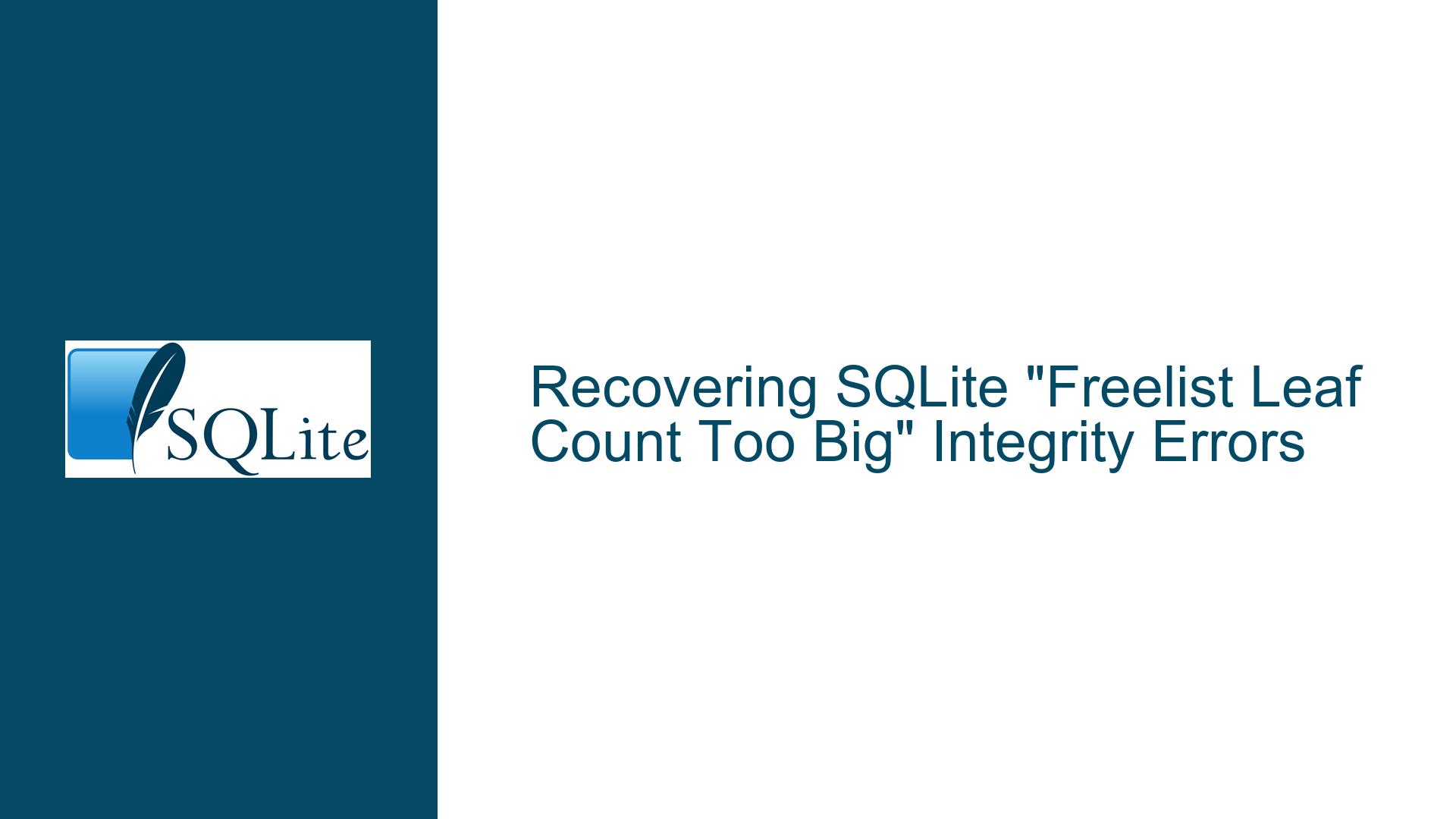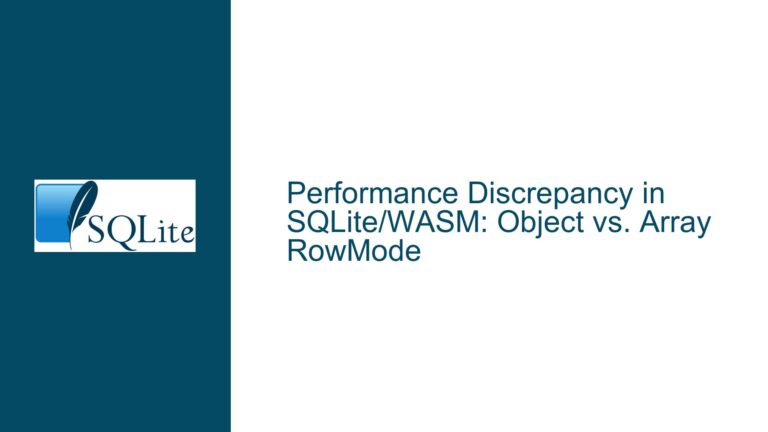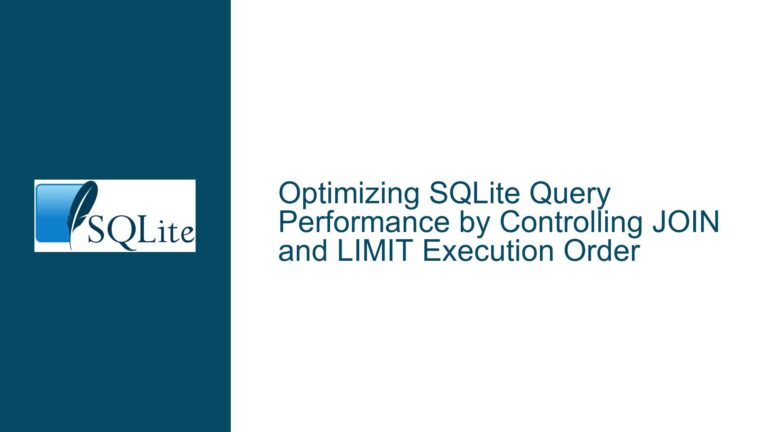Recovering SQLite “Freelist Leaf Count Too Big” Integrity Errors
Understanding Freelist Corruption & Integrity Check Failures
The "freelist leaf count too big" error in SQLite indicates a structural inconsistency within the database’s freelist, a critical component managing unused pages. This error is accompanied by secondary warnings such as invalid page numbers and duplicate references, all pointing to a corrupted freelist or B-tree structure. The freelist’s role is to track pages available for reuse, ensuring efficient storage allocation. When its metadata becomes inconsistent—due to invalid page counts, mislinked pages, or phantom references—SQLite’s PRAGMA integrity_check flags these anomalies.
Key Symptoms & Error Breakdown
The specific errors observed—freelist leaf count too big, invalid page number, and 2nd reference to page 17—reveal a multi-layered problem:
- Freelist Leaf Count Mismatch: The freelist’s metadata (stored in the database header) claims more leaf pages than physically exist. Page 17, referenced here, is either incorrectly marked as part of the freelist or contains invalid linkage.
- Invalid Page Number: The freelist attempts to reference a non-existent page (218103808), indicating either a corrupted pointer or a calculation error during freelist traversal.
- Duplicate Page Reference: Page 17 is improperly linked in both the freelist and a B-tree structure (tree page 2), violating SQLite’s requirement that a page belong exclusively to one structure.
These errors often arise from incomplete writes, filesystem inconsistencies, or memory corruption during critical operations like page deallocation or truncation.
Root Causes: Filesystem, Virtualization, & Memory Flaws
Freelist corruption is rarely caused by SQLite itself. Instead, it stems from external factors disrupting atomic writes or memory integrity:
Virtual Machine Storage Emulation Bugs
Virtualized environments (e.g., VMware, KVM) may mishandlefsync()operations or cache synchronization. SQLite relies on atomic commits via write-ahead logging (WAL) or rollback journals, which require strict adherence to flush-and-sync semantics. Hypervisors with faulty storage emulation can interrupt these operations, leaving the database in an inconsistent state.Non-ECC Memory & Cosmic Ray-Induced Bit Flips
Consumer-grade systems use dynamic RAM without error correction (ECC). High-energy particles (cosmic rays) or electrical noise can flip bits in memory, corrupting in-memory database pages before they are written to disk. If the corrupted page is part of the freelist or a B-tree node, subsequent writes propagate the error to disk.Filesystem Journaling & Ext4 Edge Cases
While ext4 is robust, certain configurations (e.g.,data=writebackmode) delay metadata journaling, risking partial page writes during crashes. SQLite’sPRAGMA synchronous=FULLmitigates this but cannot fully compensate for filesystem-level inconsistencies.Unclean Shutdowns During Freelist Updates
If a process is terminated while modifying the freelist (e.g., duringVACUUMorDELETEoperations), the freelist’s linked list structure may break. For example, a page marked as free might not be properly unlinked from its parent structure.
Recovery Procedures & Long-Term Mitigation Strategies
Step 1: Salvage Data via VACUUM or Dump/Restore
If the database is still readable, rebuild its structure using:
VACUUM INTO '/path/to/repaired.db';
This creates a new database with a reconstructed freelist and B-trees. Validate the new database with PRAGMA integrity_check.
For severely corrupted databases, use the SQLite CLI to dump the schema and data:
sqlite3 corrupted.db .dump | sqlite3 repaired.db
This bypasses low-level structural issues by reconstructing the database from logical SQL statements.
Step 2: Validate Data Consistency
Compare the original and repaired databases using sqldiff:
sqldiff corrupted.db repaired.db
Ensure no data loss occurred during recovery.
Step 3: Address Environmental Risks
- Enable ECC Memory: Critical for servers handling high-value data.
- Audit Virtualization Stack: Check hypervisor logs for storage errors; consider switching to paravirtualized drivers (e.g., virtio).
- Filesystem Tuning: Use
data=journaledmode on ext4 and avoid network-backed storage (NFS, CIFS).
Step 4: Implement Proactive Monitoring
- Schedule regular
PRAGMA integrity_checkruns. - Use
PRAGMA quick_checkfor faster (but less thorough) scans. - Enable SQLite’s crash-safe write-ahead log (
PRAGMA journal_mode=WAL) to reduce corruption risk during concurrent writes.
Step 5: Forensic Analysis
If corruption recurs, inspect system logs (dmesg, journalctl) for storage or memory errors. Tools like smartctl can check for failing disks, while memtester identifies faulty RAM modules.
Final Note: While VACUUM often resolves freelist issues, persistent corruption suggests deeper environmental flaws. Always maintain verified backups and consider migrating to a server-grade environment for mission-critical databases.






